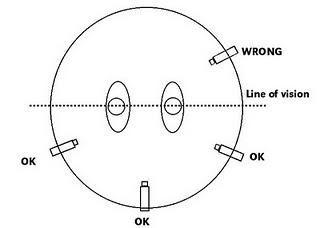What does editing do? - Editing is a post-production process. A modern film is perfected digitally through the process of editing. The film editor gets given the captured, raw footage from the filming process and has to piece different shots together, combining them into sequences using sound bridges, cuts or transitions to create a final motion picture with flawless seems that runs smoothly between different shots.
Definitions of key terms; Cut - Where one shot is suddenly replaced by another. Within a continuous scene or sequence, shots are usually strung together using cuts.
Dissolve - Dissolve is when one shot fades out as another fades in. The dissolve is usually used to signify a change in time or place.
Fade - Fades are often used to start or end a scene. Often used to fade into scenes from black or white and to fade out of scenes to black.
Jump Cut - A jump cut is a cut in editing. This is when two shots of the same subject are taken from slightly different camera angles. This give us the effect of jumping forward in time.
Does the shot reverse shot help the narrative or generate meaning? - Shot reverse shots and used usually in conversational scenes between characters. This helps the viewers focus on the person who is talking and the characters reactions.
Why is the 180 degree rule important? - The 180 degree rule is important becuase it enables the audience to follow conversation as if it were happening before you. If the camera man ignores the 180 degree rule then the audience will become disorientated and the conversation will seem like the characters aren't facing eachother and will seem far less natural.
How and why is the point of view shot used? - The point of view shot is normally used in a sequence of shots. The first shot would be of the character looking at something, then the point of view shot to show us what they're looking at. This shot is used to show what the character sees making thw audience feel as if they are the characters 'eyes.'
How else can Point Of View (POV) be created? - The Point Of View (POV) shot can also be executed by using a camera. The camera man can shake he camera slightly to create senses of nervousness/fear from the characters point of view. Filters can be placed over the lens of the camera to create different types of atmospheres as well, for instance if the viewer is focusing on a particular character and the (POV) character feels anger then a red may be placed over the camera lens.
What is parallel or cross cut editing? - Cross cut or parallel editing is when two scenes are taking place at the same time. The same two shots can be seen in the scene but both of them are slightly faded to enable close colours to be distinguished.
What editing techniques are used to create suspense? - Suspense is created through the use of music and sound effects. Also cross-cutting sequences between a victim and an evil character. The POV shot can be used as well to create suspense. The POV being that of the evil character as they get closer to the victim.
Explain in your own words how the mouse sequence creates tension - There's a lot of POV shots in this scene and the music sustains a long, quiet note that builds tension. The use of a common conventions in horror films such as silence. Also when the boy looks under the bed, his vision is impared by the darkness under his bed, this creates a sense of 'the fear of the unknown' which is also quite a common convention used in horror films, the shot/reverse shots and POV shots build tension. They use various different camera techniques like extreme close up to show the characters' facial expressions - this creates a sense of emotion in the character and gives you a feel of empathy. The jump cut to the mouse running out from under the bed is a very sudden change in the plot. It happens very quickly and the zooming towards the young boy on the camera represents the mouse's movement towards the character and gives the audience a sense of the mouse 'attacking' the character. But, then, when the mouse runs out from under the bed, this releases all the tension.
Why is timing important in editing? - Timing is important in editing because you need sound effects or special effect to be used at the right time to fit in with the pictures in the viewer. Timing is also important for the build up to any climaxes, the non diagetic sounds like the music, crescendo's, hit points etc need to be relevant to what is in the viewer to create the most amount of tension possible.
Explain in your own words what the continuity system is - The continuity system is a form of editing that makes the transitions are 'invisible'. They're intended to make the film run as smoothly as possible, the cut from one shot to the next is discrete, hence, this doesn't draw your attention to the editing that has been done.
Why does editing strive to be invisible? - Overall it makes the audience seem like it's less of a set up production and it seems more real to them, as if it were actually happening in front of them.


























